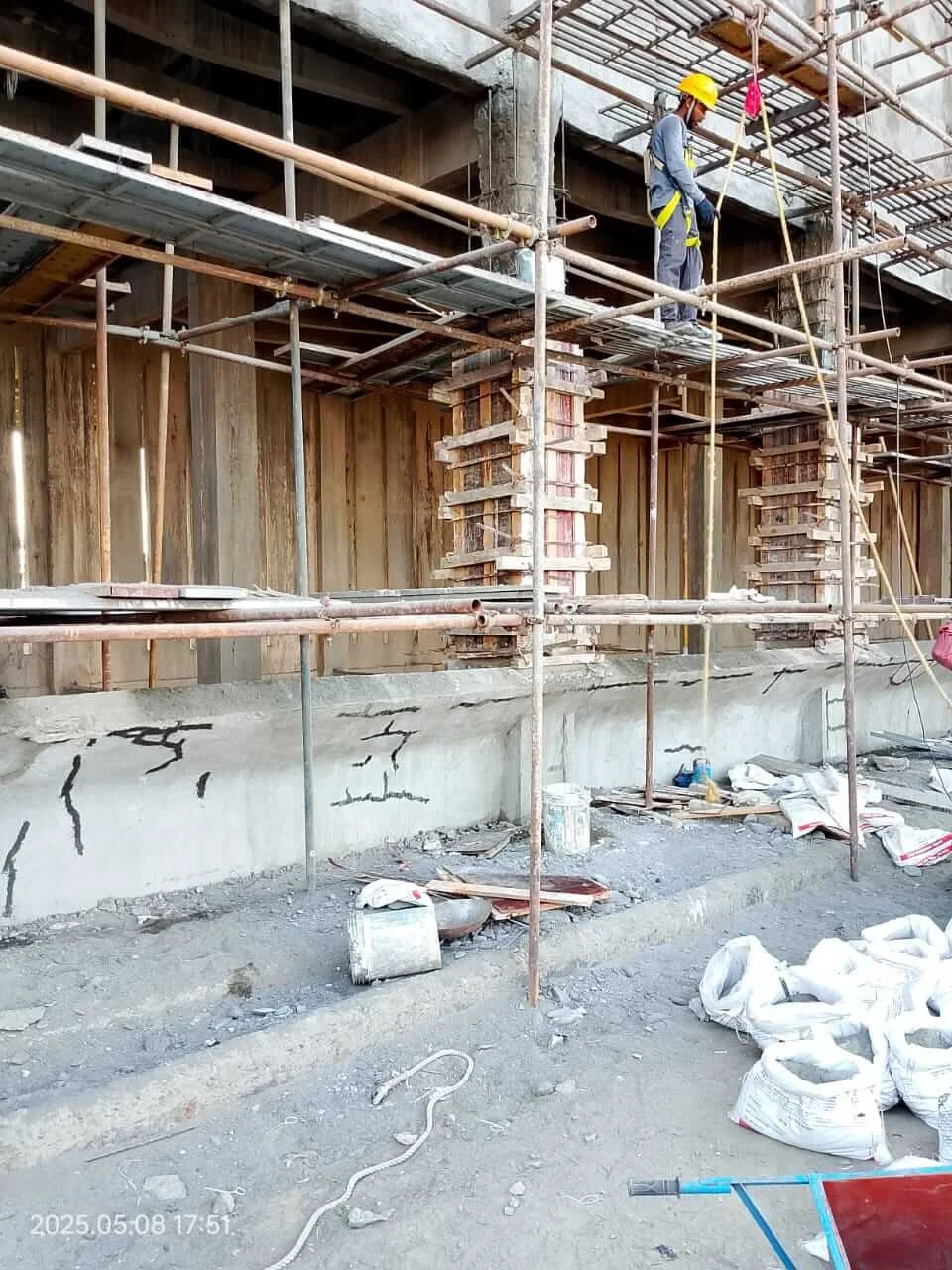Column jacketing is one of the most reliable methods used in structural repair and strengthening of reinforced concrete structures. It is a widely adopted technique when buildings or infrastructure start showing signs of distress or reduced load-carrying capacity. By providing an additional layer of concrete, steel, or composite materials around the existing column, jacketing improves durability and restores strength. This method is especially important in urban areas where retrofitting is often more practical than reconstruction.
Why Column Jacketing is Needed
Over time, reinforced concrete columns may suffer from cracks, spalling, corrosion of steel, or loss of load capacity. These issues can arise due to poor quality materials, environmental exposure, seismic activity, or overloading. Column jacketing becomes essential to extend the life of these structures. Instead of demolishing and rebuilding, which can be costly and disruptive, jacketing offers a faster, safer, and more economical solution. It ensures safety without interrupting the overall function of the building.
Benefits of Column Jacketing
The biggest advantage of column jacketing is its ability to restore and even enhance the strength of deteriorated columns. It increases axial load-carrying capacity, improves seismic resistance, and provides better ductility. For structures in earthquake-prone zones, column jacketing ensures that buildings meet updated safety standards. It also prevents further deterioration of reinforcement steel by protecting it from moisture and chemical attacks. In addition, jacketing minimizes downtime, making it ideal for residential, commercial, and industrial buildings that need continuous usage.
Types of Column Jacketing
There are multiple approaches to column jacketing depending on the structural requirement and budget. Concrete jacketing involves adding a reinforced concrete layer around the column, which is the most traditional method. Steel jacketing uses steel plates or casings, suitable for heavily loaded structures. Fiber-reinforced polymer (FRP) jacketing has gained popularity for its lightweight and high-strength properties. Each method has its own application, and the choice depends on the column’s condition, the environment, and performance expectations.
Concrete Jacketing
Concrete jacketing is the most common type used in structural strengthening projects. It involves adding new concrete and reinforcement around the existing column. This increases cross-sectional area and overall stiffness. It is cost-effective, durable, and provides excellent fire resistance. However, it requires skilled workmanship to ensure proper bonding between old and new concrete layers. This method is often used in residential and commercial buildings where columns have deteriorated due to aging or exposure.
Steel Jacketing
Steel jacketing is another effective technique used when columns require quick strengthening without increasing their size significantly. Steel plates or steel casings are placed around the column and tightly anchored. This method provides high load-carrying capacity and improved ductility. Steel jacketing is often used in industrial facilities, bridges, and high-rise buildings where structural safety is critical. However, it requires proper maintenance to avoid corrosion, making protective coatings and regular inspections essential.
Fiber-Reinforced Polymer (FRP) Jacketing
FRP jacketing has become increasingly popular in recent years due to its advanced material properties. It uses carbon or glass fiber sheets wrapped around the column, bonded with epoxy resin. This method is lightweight, non-corrosive, and provides high tensile strength. FRP jacketing is especially useful for seismic strengthening and upgrading old structures to meet new building codes. Its fast installation and minimal disturbance make it suitable for structures where continuous operation is necessary, such as hospitals or commercial complexes.
Column Jacketing for Seismic Strengthening
One of the major applications of column jacketing is improving seismic performance. Many older buildings were not designed to resist earthquakes as per current standards. Jacketing increases ductility, enhances confinement of concrete, and improves load transfer. This makes the structure capable of withstanding earthquake forces with reduced chances of collapse. For cities in seismic zones, such as Delhi, Mumbai, and other parts of India, column jacketing has become a key technique in retrofitting projects.
Steps Involved in Column Jacketing
The process of column jacketing involves systematic steps to ensure effectiveness. First, the damaged concrete surface is cleaned and loose material is removed. Exposed reinforcement is treated or replaced if corroded. Additional reinforcement is then fixed around the column. Depending on the method, formwork is installed for concrete or plates for steel casing. Finally, the jacketing material is applied and finished. Proper curing and quality checks are crucial for long-term durability and performance.
Common Applications of Column Jacketing
Column jacketing is widely applied in various types of buildings and infrastructure. It is commonly used in residential apartments where columns show signs of cracking or spalling. In commercial complexes and office spaces, jacketing ensures safety without halting operations. Bridges and flyovers often use jacketing to extend their lifespan under heavy traffic loads. Educational institutions, hospitals, and industrial plants also rely on this technique to upgrade safety standards and ensure uninterrupted functionality.
Advantages Over Demolition and Reconstruction
Demolishing and reconstructing a structure is not always feasible due to cost, time, and disruption. Column jacketing provides a sustainable alternative by strengthening existing structures. It reduces construction waste, minimizes inconvenience to occupants, and is environmentally friendly. This method allows engineers to meet safety codes without compromising the original design. For cities facing rapid urbanization, column jacketing is a practical approach that balances safety, cost-effectiveness, and sustainability.
Column jacketing is an essential technique in modern construction and retrofitting projects. It plays a vital role in strengthening, repairing, and extending the life of structures. Whether through concrete, steel, or FRP methods, jacketing ensures safety and durability in buildings and infrastructure. With growing concerns about seismic safety and aging structures, column jacketing continues to be a preferred choice for engineers and property owners. Its versatility and reliability make it a cornerstone in structural strengthening solutions.


